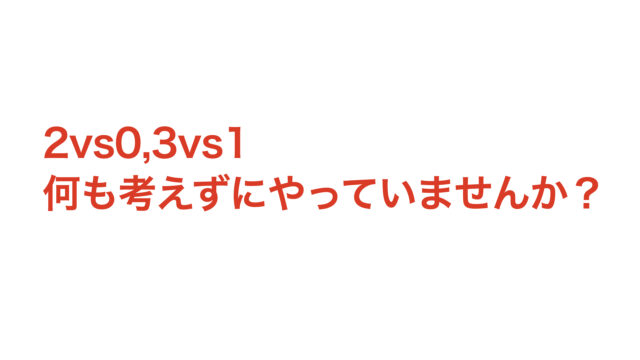This article explains transitions in equal numerical situations (1vs1, 2vs2).
In these scenarios, although the number of players on both sides is the same, it is not easy to finish the play because the opponents are unorganized. Sometimes, based on the flow of the game, a decision is made to attack slowly (delayed attack) intentionally.
Let’s go through each specific diagram step by step.
Temporizing refers to the act of creating time through a deliberate action.
During a transition (counter), by deliberately moving the ball slowly to allow teammates to advance, you can create a numerical advantage.
Progression (Branches) from Equal Numerical Situations
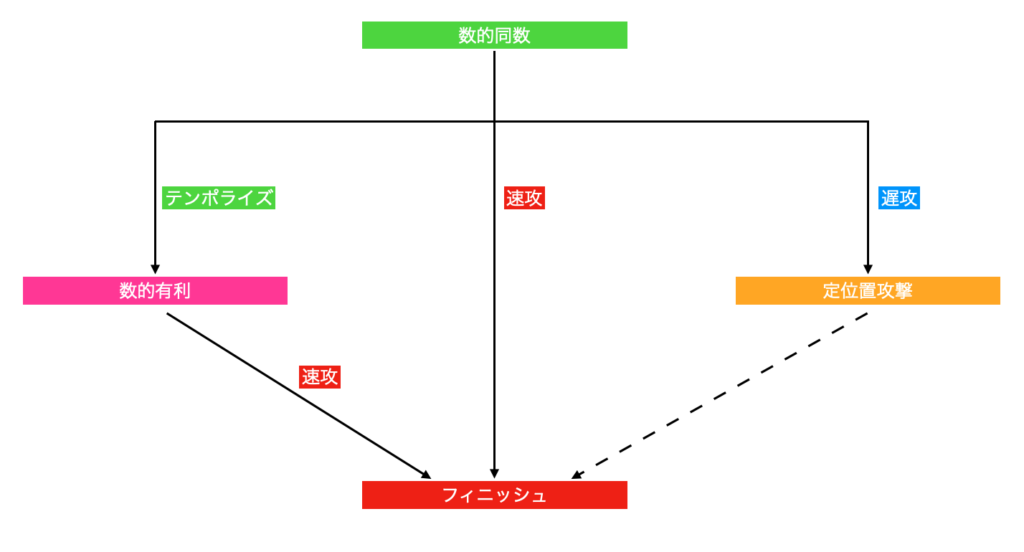
The progression of play that can be anticipated from an equal numerical situation is shown in the diagram above. (Cases such as losing the ball are omitted.)
When the attacking side in an equal numerical situation considers the next action, the key factor is which occurs faster: teammates advancing or the opponent’s retreat.
- Teammates advancing > retreat → Temporize → Numerical superiority
- Teammates advancing < retreat → Fast attack or delayed attack
This article omits the approach of attacking slowly (delayed attack) until the team is organized (i.e., transitioning into positional attack and positional defence).
1vs1
When Teammates Advancing > Opponent’s Retreat → Temporize → 2vs1
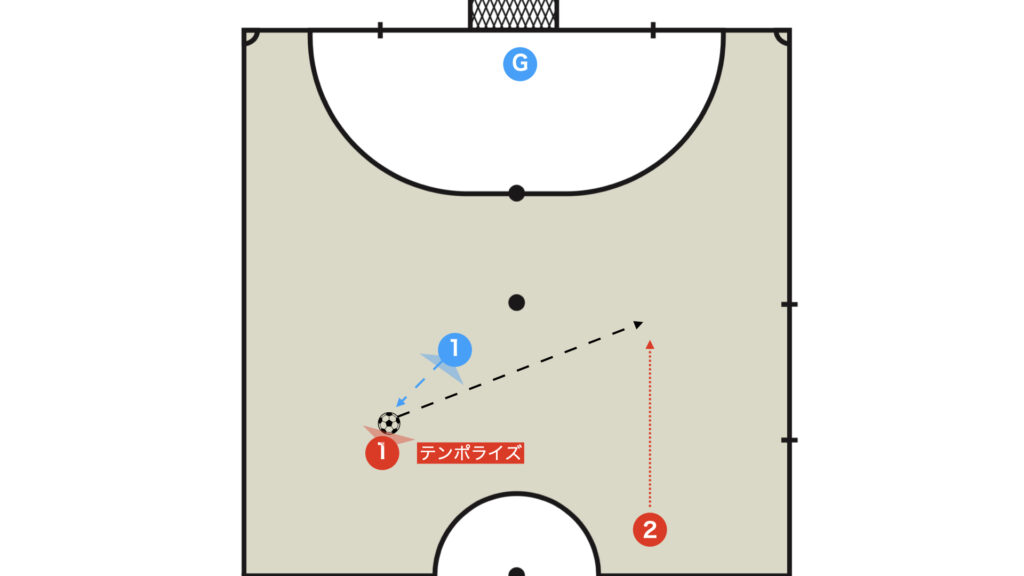
Once a teammate has advanced past the ball, the play is considered to have transitioned into a 2vs1 numerical imbalance.

When Teammates Advancing < Opponent’s Retreat
Fast Attack or Delayed Attack
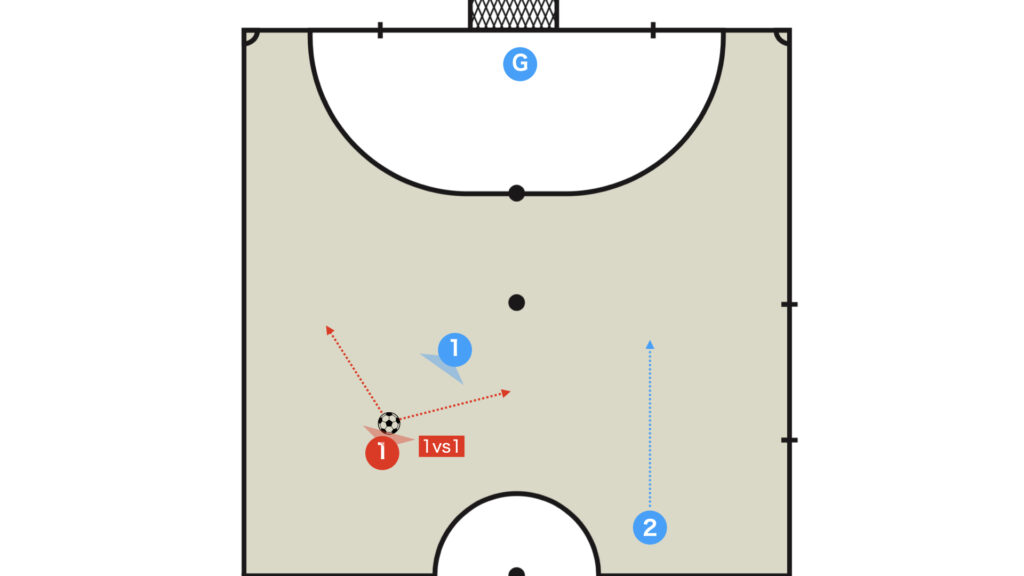
If the opponent’s retreat is faster than the teammates advancing, there are two options: either initiate a 1vs1 fast attack by challenging the immediate defender, or wait until the team is organized (delayed attack).
The choice should ideally be determined by the individual ability of the ball holder (dribbling, shooting, etc.).
Temporize: From Numerical Disadvantage (1vs2) → to Numerical Superiority (3vs2)
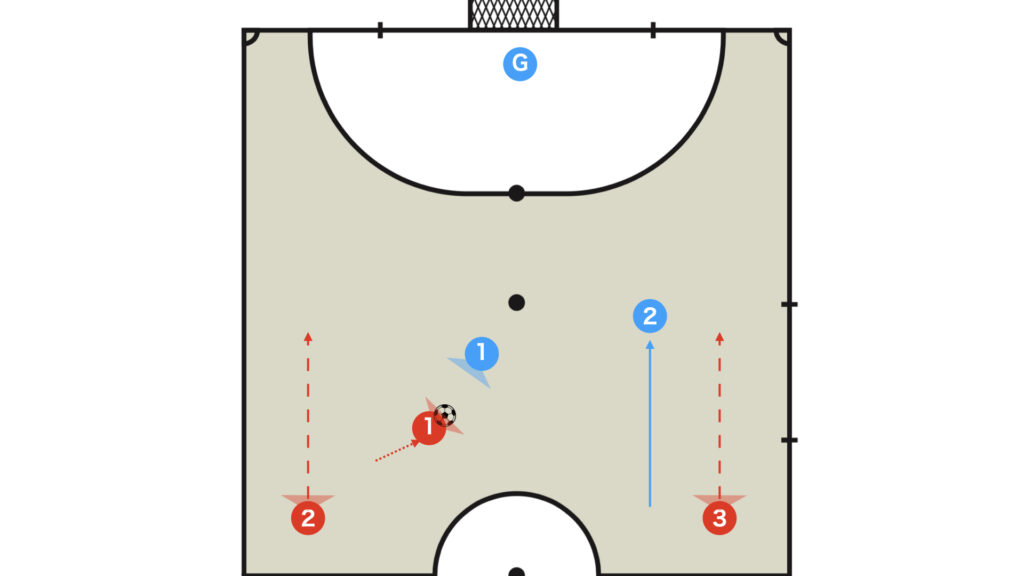
After falling into a 1vs2 situation due to the opponent’s retreat, if two teammates can be expected to advance, then by moving the ball slightly towards the center to create time (temporizing) and waiting for the teammates to catch up, it is possible to shift into a 3vs2 situation.
It would be a shame to create a numerical advantage only to have it nullified by the opponent temporizing. Therefore, it is also effective to take an action to steal the ball before the opponents can overrun the ball holder.
One method is to attack solely with the player in blue number 1, and another is to double team the ball with blue numbers 1 and 2.
If you can steal the ball at the right moment, it can turn into a counter-counter attack and create a scoring opportunity. However, if the attempt is thwarted, it could lead to a critical crisis.
There is no definitive answer when it comes to defensive responses; it is crucial that the team makes decisive decisions without hesitation.
However, since a 3vs2 situation is not a scenario where a goal is easily scored, it can sometimes be acceptable to concede it.
2vs2
When Teammates Advancing > Opponent’s Retreat
If the teammates advancing are faster than the opponent’s retreat, the ball holder creates time by moving the ball toward the center while waiting for the advancing teammates.
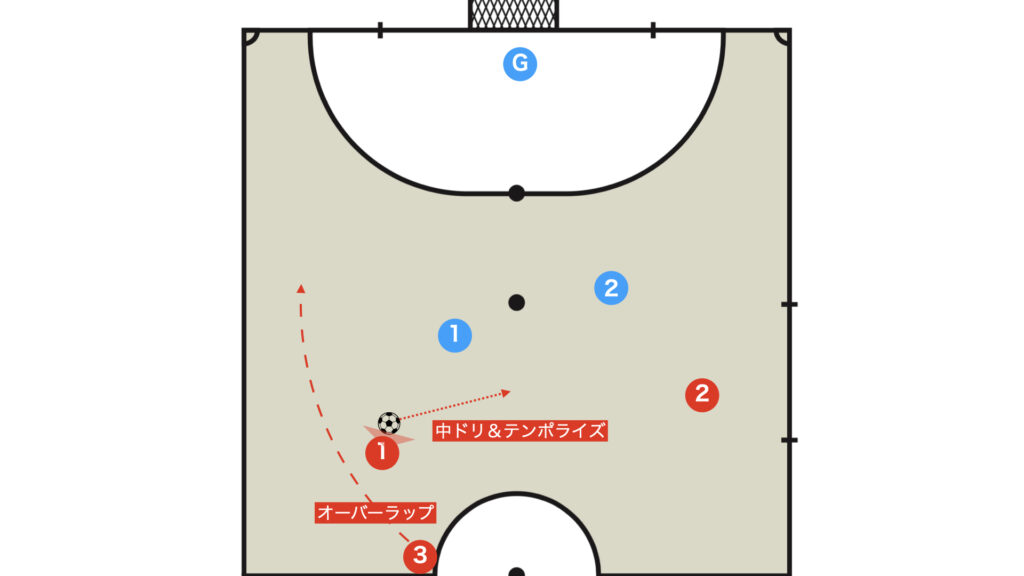
The teammates overlap the ball holder.
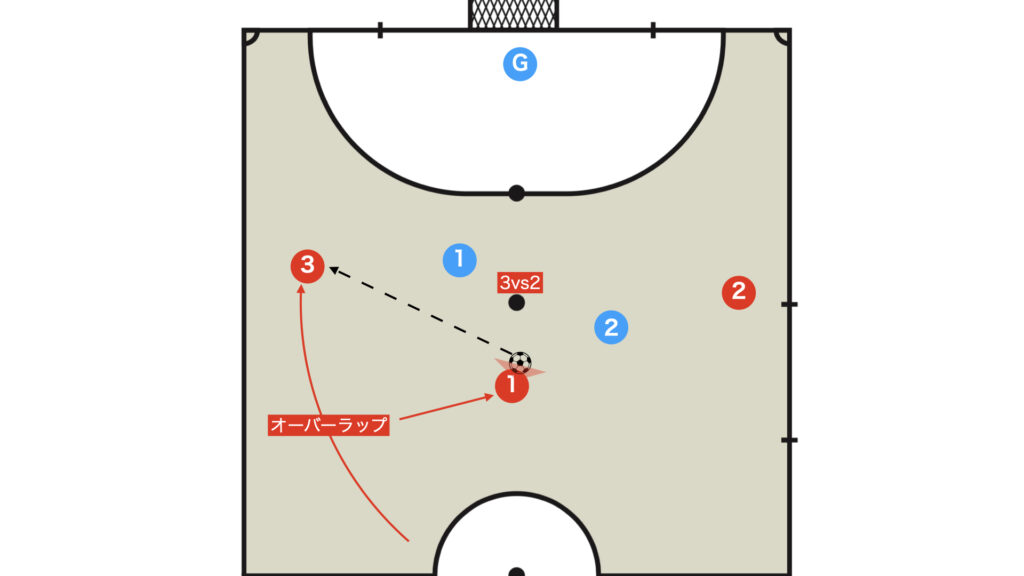
The opposing DF in blue must adjust their defensive approach when the situation shifts from 2vs2 to 2vs3.
The key for the attack is to deliver a forward pass before the defender’s response can catch up.
Since the ball holder barely has time to turn their head to check what’s behind, it is effective for the team to have a shared awareness by calling out the situation (retreats and advancing teammates) from behind.
When Teammates Advancing < Opponent’s Retreat

If the opponent’s retreat is faster than the teammates advancing, there are two options: either drive forward to finish before the retreat is complete, or wait until both sides are organized (delayed attack).
When the Ball Holder has Breakthrough Ability → Creating Isolation (1vs1)
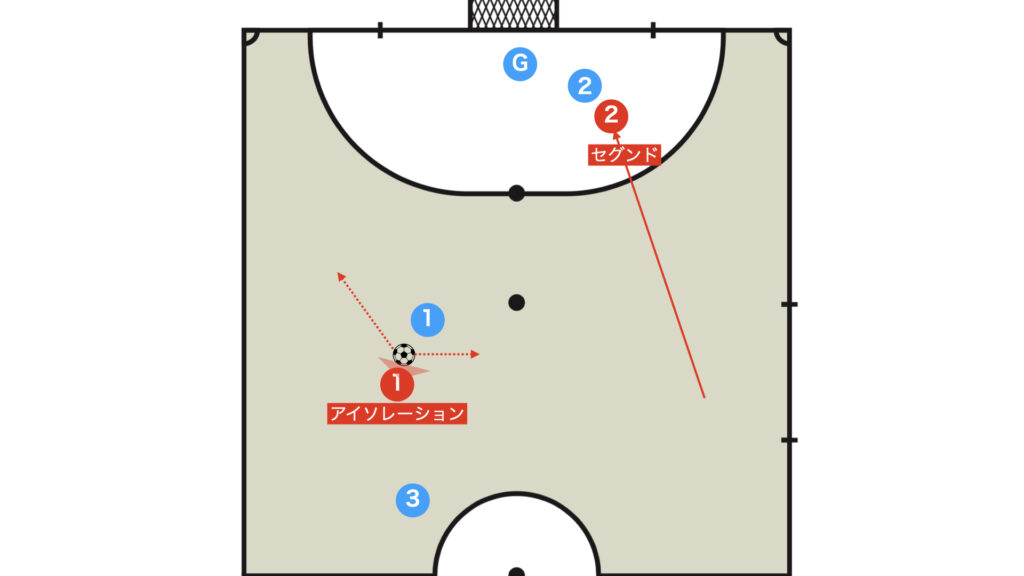
If the ball holder excels in 1vs1 dribbling and shooting, it is effective for the off-ball player to move into the position of segundo and isolate the ball holder, thereby creating a 1vs1 scenario (locally shifting a 2vs2 into a 1vs1 situation).
Considering that the opponent’s retreat is coming from right behind, it is advisable to quickly advance vertically and take the shot.
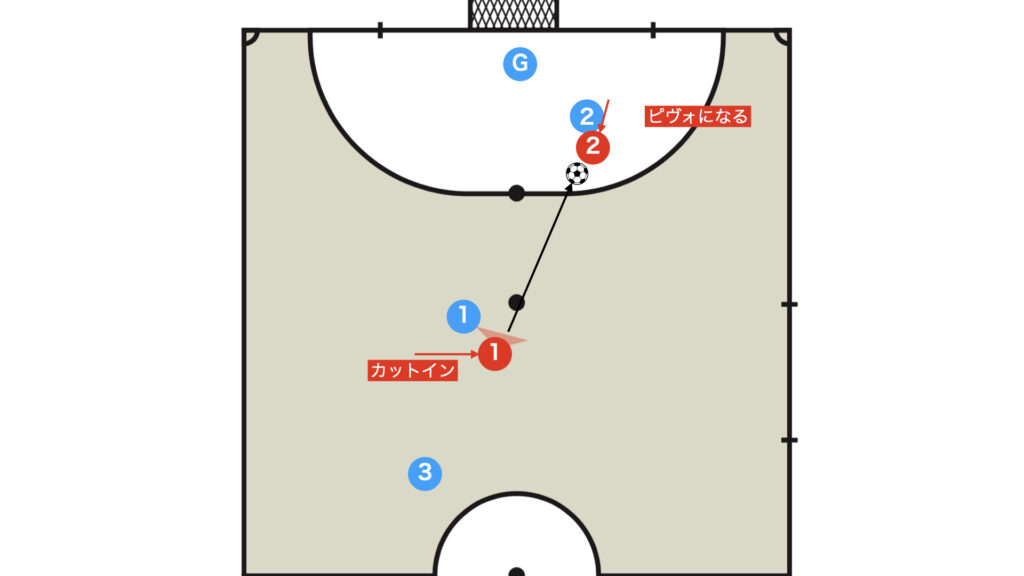
When the ball holder cuts in, if the shooting opportunity seems low, it is effective for the segundo to become the pivo by using the duo (pivo-fixo) to break down the defense.
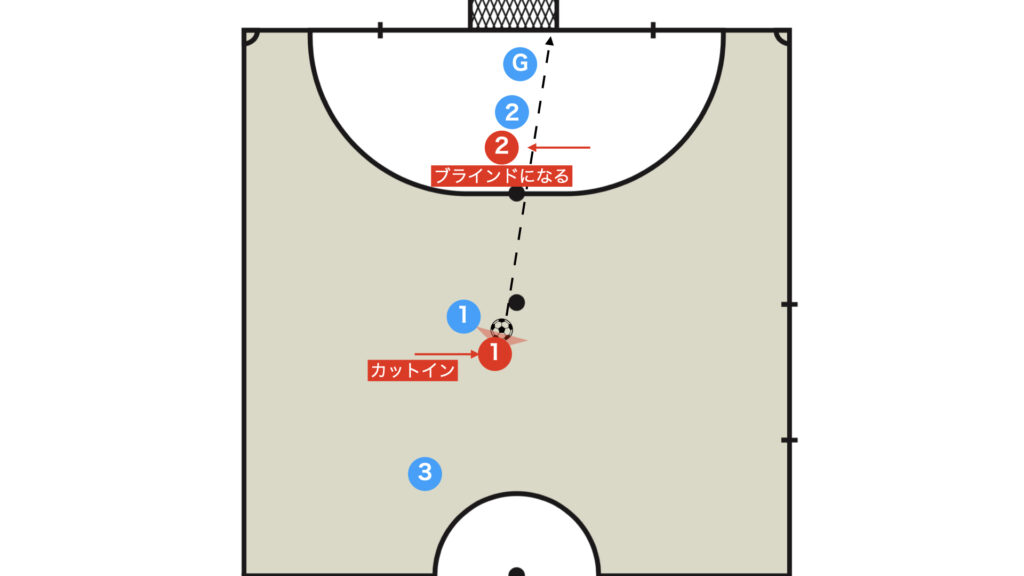
If the ball holder is confident in their shooting, it is effective for the off-ball player to cross in a way that obstructs the goleiro.
When the Ball Holder Lacks Breakthrough Ability → Focusing on Duo
There are various forms of duo relationships, but here we introduce three particularly effective ones.
- Ala Corta
- One-Two
- Curtain (or Block)
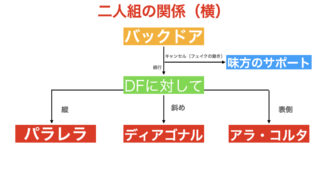
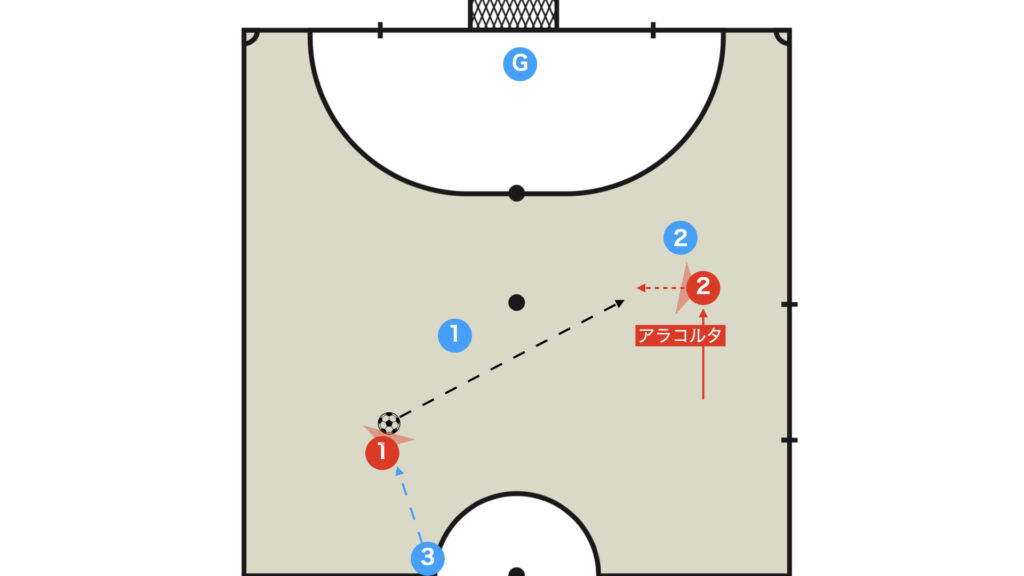
Ala Corta (moving toward the ball) is the most effective method as it allows the ball to be received closer to the goal and enables a finish with minimal effort.
However, it requires clear communication between the passer and the receiver, as well as a series of techniques from controlling the pass to shooting.
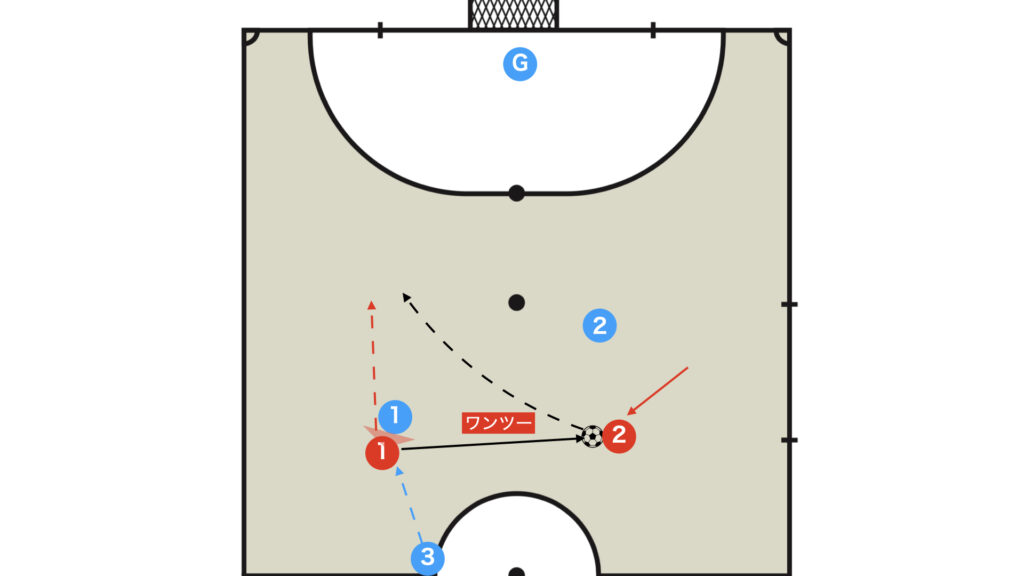
If the ball holder is under heavy press, it is effective for the off-ball player to provide lateral support and set up a one-two.
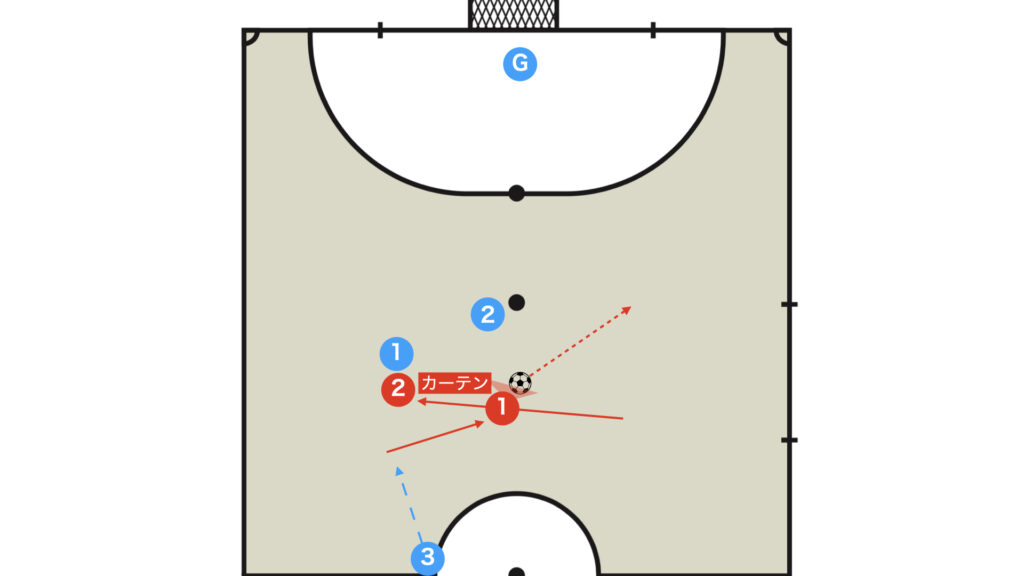
Inducing a mark switch by the opposing defender, curtains or blocks are effective in temporarily securing a dribbling or shooting lane.
Conclusion
This article discussed transitions in equal numerical situations.
Although much attention is often given to numerical imbalances, equal numerical situations occur very frequently and are extremely important.
In particular, since temporizing forces the opposing defenders to change their approach, simply having the team aware of this can significantly enhance scoring potential.
Also, since it is closely related to Transition Difference 1 (2vs1, 3vs2), it is best to organize them as a set.
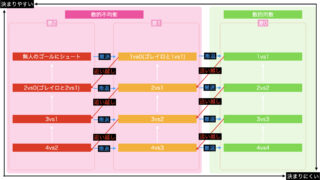
Thank you very much for reading this article to the end.
If you found this article useful, please consider sharing it using the social media share buttons above.
We regularly share valuable insights on futsal tactics on Twitter, so if you haven’t followed us yet, we’d appreciate your support!
We are committed to raising the level of futsal in Japan by sharing high-quality information through discussions with individuals who have coaching experience in the F.League and overseas.
If you have any questions or notice any mistakes, feel free to leave a comment below.
We update our articles regularly, so if you’d like to keep reading, please bookmark our site or search for “FutTech”!


